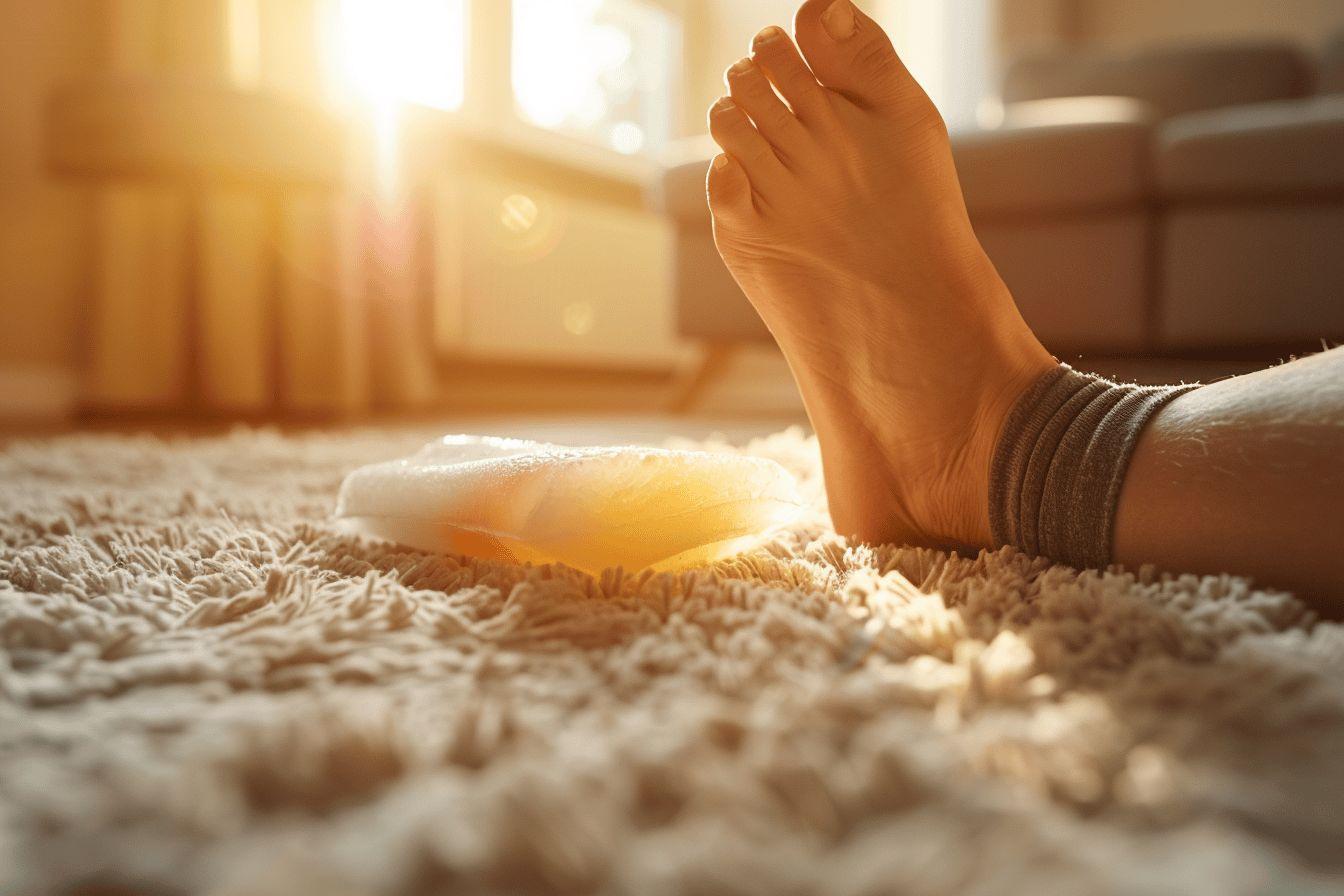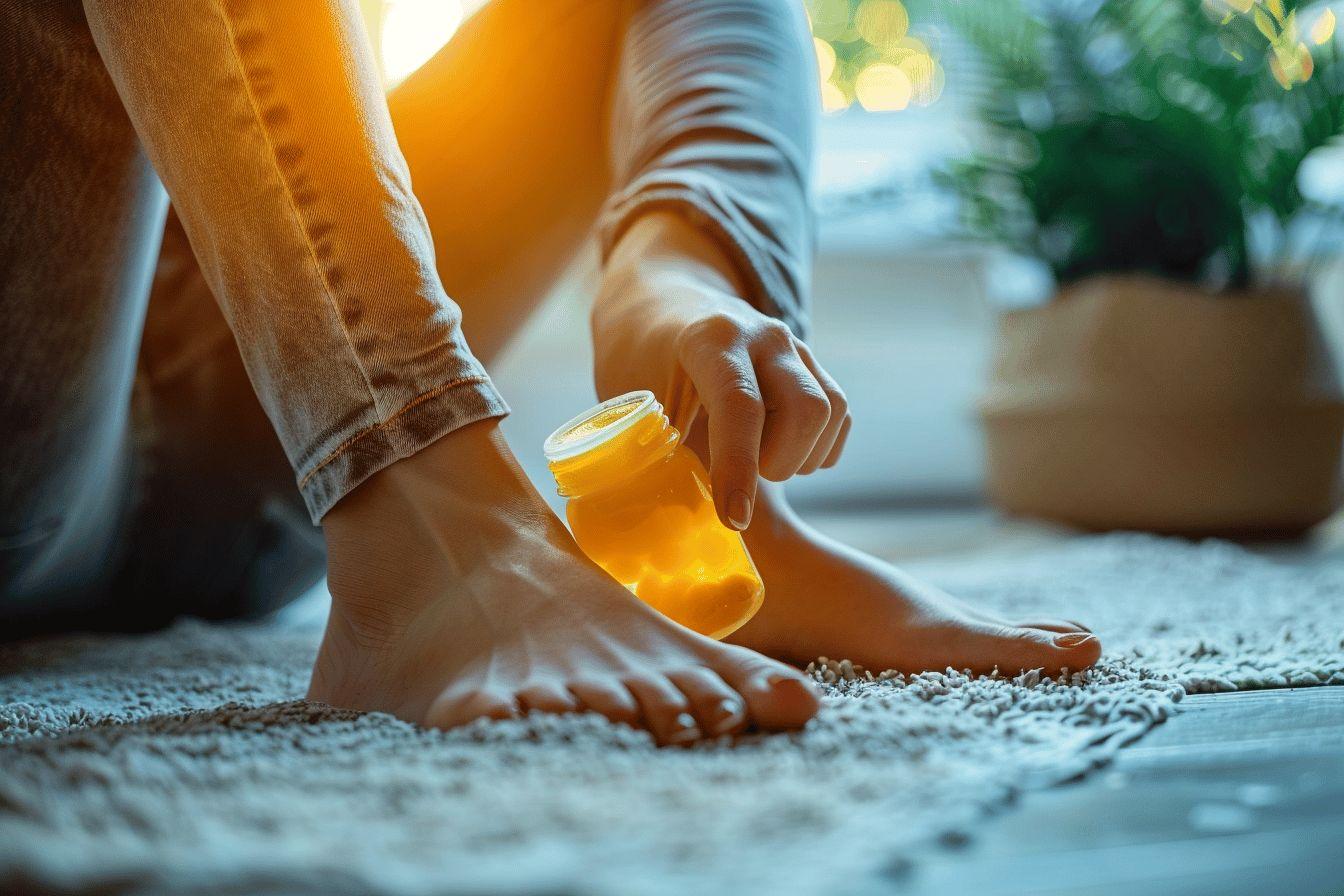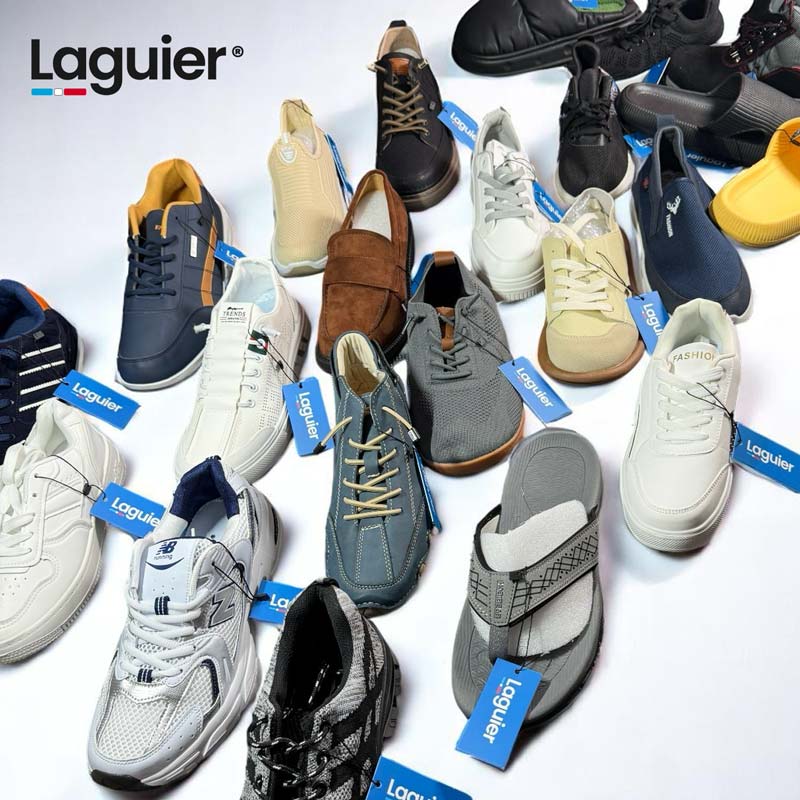Heel spurs, a painful bony growth in the heel, can be relieved with various treatments and approaches. Here are the key points:
- Main symptoms: sharp heel pain, burning sensation, discomfort intensifies after prolonged standing
- Conservative treatments: rest, ice application, stretching, anti-inflammatory medications
- Orthopedic solutions: custom-made orthotics, adapted shoes, shock wave therapy
- Complementary approaches: weight management, massage techniques, acupuncture
- Surgery: considered as a last resort, includes plantar fascia release or bone spur removal
The spur Heel spur is a painful condition affecting the heel, causing daily discomfort. This bony growth can significantly affect the quality of life of those who suffer from it. Fortunately, there are solutions to relieve the pain and effectively treat this problem. In this post, we will explore the different treatment options and tips for best managing this condition.
Understanding Heel Spurs and Their Symptoms
A heel spur, also known as a calcaneal spur, is a bony growth that forms at the base of the heel. It often results from chronic inflammation of the plantar fascia, the band of connective tissue that connects the heel to the toes. The main symptoms of heel spurs include:
- Sharp pain in the heel, especially when first walking in the morning
- A burning or tingling sensation in the heel
- Discomfort that intensifies after prolonged standing or sitting
- Pain that worsens when bending the foot
It should be noted that heel spurs can sometimes be confused with other foot conditions, such as plantar fasciitis. An accurate diagnosis is essential to determine the most appropriate treatment.

Conservative Treatments for Pain Relief
Heel spur management typically begins with non-invasive conservative treatments. These approaches aim to reduce inflammation, relieve pain, and improve foot function. Here are some effective options:
Rest and Activity Modification: It is crucial to limit activities that aggravate pain. Rest helps reduce inflammation and promotes natural healing of the injured tissue.
Ice Application: Using ice packs on the painful area can help reduce inflammation and numb the pain. Apply the ice for 15 to 20 minutes, several times a day.
Specific Stretches and Exercises: Targeted stretching exercises can help loosen the plantar fascia and calf muscles. These effective exercises can be done at home to relieve tension and improve flexibility.
Anti-inflammatory Medications: Over-the-counter nonsteroidal anti-inflammatory drugs (NSAIDs), such as ibuprofen or naproxen, can help reduce the pain and inflammation associated with heel spurs.
Orthopedic Solutions and Complementary Therapies
When conservative treatments are not enough, other options may be considered to relieve heel spur symptoms. These approaches include:
Custom Orthotics: Custom orthotic insoles can help redistribute pressure on the foot and relieve heel pain. They provide additional arch support.
The Right Shoes: Choosing the right shoes is crucial. Choose styles that offer good heel cushioning and adequate arch support.
Shockwave Therapy: This non-invasive technique uses sound waves to stimulate soft tissue healing and reduce pain. It has proven effective for many patients with heel spurs.
Corticosteroid Injections: In some cases, your doctor may recommend a corticosteroid injection to reduce inflammation and provide short-term pain relief.
| Treatment | Advantages | Disadvantages |
|---|---|---|
| Custom Orthotics | Long-lasting relief, posture correction | High cost, adjustment period required |
| Shockwave Therapy | Non-invasive, effective for many patients | May require multiple sessions, discomfort Temporary |
| Corticosteroid Injections | Fast Pain Relief | Short-Term Effects, Risks of Repeated Injections |
Complementary Approaches and Prevention
In addition to medical treatments, certain complementary approaches may help relieve the symptoms of heel spurs and prevent their recurrence:
Weight Management: Maintaining a healthy weight reduces pressure on the feet, which can help relieve heel spur pain.
Massage Techniques: Self-massage of the foot and calf can help relax muscles and improve blood circulation in the area. affected.
Acupuncture: Some patients find relief through acupuncture, a traditional Chinese medicine technique that can help reduce pain and inflammation.
It's also important to pay attention to other symptoms that could be related to foot problems, such as tingling in the foot, which may indicate other conditions requiring medical attention.
When Consider Surgery
In the majority of cases, heel spurs can be effectively treated with non-surgical methods. On the other hand, if pain persists despite prolonged conservative treatment, surgery may be considered. Surgical options include:
Plantar Fascia Release: This procedure involves partially releasing the plantar fascia to reduce tension on the heel.
Bone Spur Removal: In some cases, the surgeon may choose to remove the bony growth itself.
It is crucial to thoroughly discuss the risks and benefits of surgery with a specialist before making a decision. Post-operative recovery can take several weeks or even months.
To summarize, treating a heel spur often requires a multidisciplinary approach. By combining conservative treatments, orthopedic solutions, and lifestyle changes, most patients can achieve significant relief. Patience and persistence are essential, as treatment can take time to be fully effective. Don't hesitate to consult a healthcare professional to develop a personalized treatment plan tailored to your specific situation.





Leave a comment
This site is protected by hCaptcha and the hCaptcha Privacy Policy and Terms of Service apply.